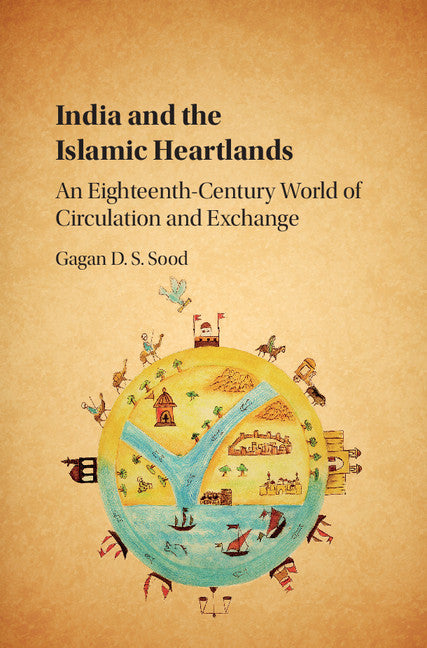Freshly Printed - allow 4 days lead
Couldn't load pickup availability
India and the Islamic Heartlands
An Eighteenth-Century World of Circulation and Exchange
Gagan D. S. Sood recaptures a vanished and forgotten world that spanned India and the Islamic heartlands in the eighteenth century.
Gagan D. S. Sood (Author)
9781107121270, Cambridge University Press
Hardback, published 29 March 2016
353 pages, 20 b/w illus. 5 maps 10 tables
23.5 x 15.9 x 2.2 cm, 0.71 kg
'Sood successfully weaves a narrative on the basis of these exchanges to point out the obvious lacuna in existing scholarship on the region … this book opens up a fresh line of enquiry about the ways in which people of the region engaged with their polities and networks of circulation, and how these shaped their world and worldviews … What distinguishes the book from other similar kinds of writings is its dealings with its sources - letters that are far from adequate, often patchy, incomplete and certainly inarticulate. Typically ideas and views are expressed in the simplest and most localised idioms, and thus Sood must be credited for building a narrative on the basis of such materials and for further drawing scholarly attention to this neglected arena for further exploration.' Mithilesh Kumar Jha, LSE Review of Books
Based on the chance survival of a remarkable cache of documents, India and the Islamic Heartlands recaptures a vanished and forgotten world from the eighteenth century spanning much of today's Middle East and South Asia. Gagan D. S. Sood focuses on ordinary people - traders, pilgrims, bankers, clerics, brokers, and scribes, among others - who were engaged in activities marked by large distances and long silences. By elucidating their everyday lives in a range of settings, from the family household to the polity at large, Sood pieces together the connective tissue of a world that lay beyond the sovereign purview. Recapturing this obscured and neglected world helps us better understand the region during a pivotal moment in its history, and offers new answers to old questions concerning early modern Eurasia and its transition to colonialism.
Prologue
Introduction
1. Cognitive patterns: approaching the world
2. A cosmic order: the meaning and end of life
3. A familial order: ties of blood, duty and affect
4. A relational order: intimates, strangers and plurality
5. A communications order: language, writing and couriers
6. A political order: temporal authority and governance
7. Everyday practices: indispensable skills and techniques
8. Flows and interactions: the arena's connective tissue
Conclusion
Glossary
Bibliography
Index.
Subject Areas: Islam [HRH], Modern history to 20th century: c 1700 to c 1900 [HBLL], Middle Eastern history [HBJF1], Asian history [HBJF], Regional & national history [HBJ]


